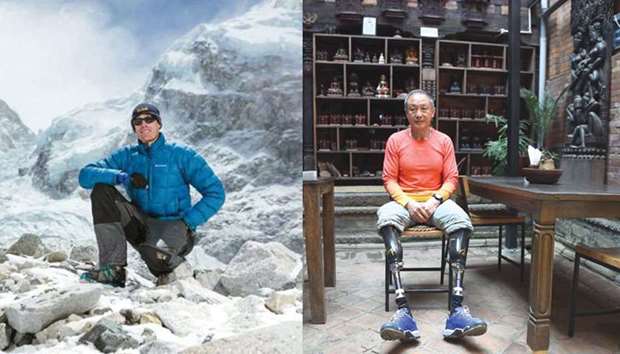Australian Steve Plain became the fastest climber to scale the highest peaks in seven continents, taking 117 days for a feat popularly called the “Seven Summits”, after he scaled Mount Everest early yesterday, his expedition company in Nepal said.
Plain, 36, from Albury, Australia, reached the 8,848m (29,035ft) peak of the world’s tallest mountain after climbing more than seven hours from the final camp, at the 8,000m (26,246ft) South Col, to claim the record.
“He has set the record of climbing Seven Summits in the shortest time of 117 days,” said Ishwari Paudel, an official of the Himalayan Guides hiking company that handled logistics for the climber. Few details of the climb were available.
A Polish climber held the previous record of 126 days to complete the Seven Summits.
Apart from Everest, the six highest peaks are Denali (North America), Elbrus (Europe), Vinson (Antarctica), Aconcagua (South America), Kilimanjaro (Africa) and Papua New Guinea’s Carstensz Pyramid (Australasia/Oceania).
A Chinese climber also set a new record yesterday, becoming the first double amputee to summit Everest from the Nepali side of the peak.
Xia Boyu, 70, first tried to reach the top in 1975 but lost both his legs in the process due to frostbite. Subsequent attempts in 2014, 2015 and 2016 failed, according to China’s official Xinhua news agency.
“Climbing Mount Everest is my dream. I have to realise it. It also represents a personal challenge, a challenge of fate,” Xia said last month before heading to the mountain.
The only other double amputee to have summited Everest was Mark Inglis from New Zealand in 2006 from the peak’s
Tibet side.
Meanwhile, a team which deployed to fix ropes from Everest’s north in Tibet reached the summit yesterday, said the Himalayan Database which monitors climbers.
This year hundreds are expected to make it to Everest’s summit, 65 years after New Zealander Edmund Hillary and Sherpa Tenzing Norgay became the first to reach the top of the world.
Nepal has issued 346 permits to mountaineers for this year’s spring climbing season, which runs from mid-April to the
end of May.
Most Everest hopefuls are escorted by a Nepali guide, meaning about 700 climbers will tread the same path to the top of the 8,848m (29,030ft) peak in the coming weeks.
Another 180 climbers are preparing to summit Everest from its north side in Tibet, according to the China Tibet Mountaineering Association.
Everest has become a lucrative business, with foreigners paying $11,000 for a permit to summit. But cut-price climbing outfits skimping on basic safety requirements have flourished in recent years, luring amateurs to the challenge.
The rapid growth in the climbing industry has sparked complaints of overcrowding on the mountain and fears that inexperienced mountaineers could run into trouble.
Climbers try to minimise the time they spend in the aptly named “Death Zone” - an area above 8,000m on Everest where there is less than a third of the oxygen found at sea level.
At that altitude traffic jams can be deadly as the low oxygen environment leads to hypoxia - acute oxygen deprivation that leaves climbers vulnerable to frostbite, deadly swelling of the brain and fluid build-up in the lungs.
Plain, the Australian climber, complained of long queues on the way to the summit.
“When people realise they are causing a traffic jam, you’d like they’d have the courtesy to find a staff spot to step aside and let others pass. But no... (I’m looking at you Mr Blue Helmet),” the new world record holder wrote in a blog post on Sunday.

Steve Plain. Image courtesy: Facebook. Right: Chinese double amputee climber Xia Boyu pose at Bhaktapur on the outskirts of Kathmandu.


